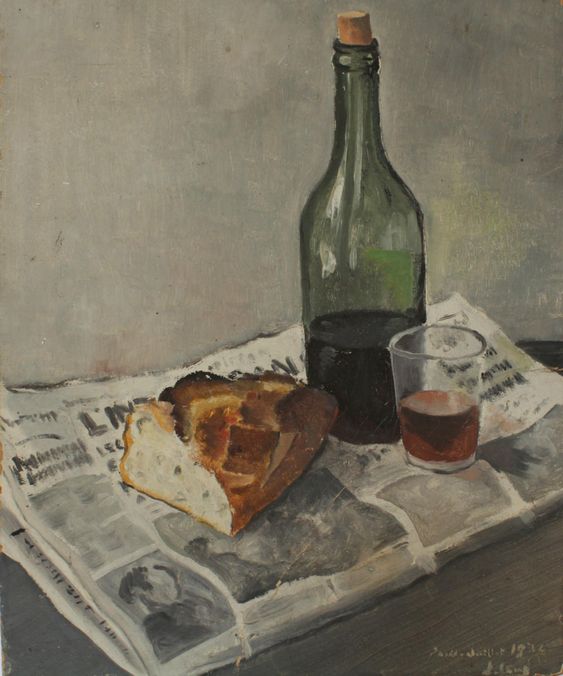By Tim Lyons, Assistant Winemaker at Martha Stoumen Wines
Photo by Dee Stucco
As a low intervention winery, nature determines each of our decisions. We keep one eye closely watching our vineyards and one eye on the larger trends that affect our work as agricultural producers. This balance is on full display each fall when we “call the pick” and make a plan to harvest the year’s crop.
Over the past few years, decisions to harvest have become increasingly complicated due to climate-driven events. This came into focus most dramatically in mid-August of 2020, when a complex of lightning strikes ignited fires in drought-stricken communities across Northern California and concerns of “smoke taint” literally clouded overhead.
SMOKE TAINT
What we know today is that smoke from wildfires can impact nearby vineyards and cause ashy or smoky characteristics in the finished wine, a fault known as “smoke taint.” The main source of smoke taint arises from volatile phenols produced when lignin (a polymer found in trees or woody-stemmed plants) burns. The smoke carries these phenols across vineyards, attaching smokey compounds to the exterior grape skins and stems, and also internally to the berry where volatile phenols bind to sugar molecules, forming glycosides. This second pathway presents a unique challenge to winemakers: bound phenols are not detectable by smell or taste; you might not know if the grapes are affected until fermentation (or later) when the sugar bonds break, convert to alcohol, and these bound phenols become free in solution.
There are many variables at play here, but proximity to the source of the fire, duration of smoke exposure, and grape variety (as well as maturity) are each significant inputs when determining the risk of picking grapes during or after fire events. Especially for red wine fermentations where we ferment with the grape skins intact, there is risk assumed with harvesting any fruit grown during a fire season — if there is a high concentration of certain volatile phenols in the must, breaking these sugar bonds might result in smoky/ashy/medicinal flavors in the wine.
To be blunt: we can’t fix smoke-tainted grapes in the winery. By rejecting the tools and chemical remedies available to industrial winemaking, we choose to work with the raw materials and conditions that we’re presented with. The vineyards we lease in Mendocino County were spared from direct wildfire in 2020, but we called the pick early in order to protect the crop from drifting smoke and honor the work in getting to that point. Little did we know, this was a turning point for our Benchlands.
CHANGING WITH THE TIMES
In choosing to pick early we traded the dark, savory characteristics of prior Benchlands for a fresher style. The 2020 blend showed crunchy red fruit, bright acidity, and soft tannin as a result of the earlier harvest and brief macerations across the Petite Sirah, Zinfandel, and Nero d’Avola. Drinking this wine throughout the year, we discovered a renewed appreciation for the table wines that would have been crafted by the Italian immigrants who originally planted these vines in Mendocino.
We carried this awareness into the 2021 harvest season where ongoing drought replaced the threat of smoke taint in determining our picking decisions. This harvest, our dry-farmed (non-irrigated) vines suffered more than ever. By the time August 2021 arrived, many vines looked overly exhausted and ready to be relieved from the energy requirements needed to support the developing crop. Once again, our immediate climate suggested a new direction and once again we opted to work with nature instead of against it. We picked Zinfandel, Petite Sirah and Nero d’Avola earlier than usual and were charmed by the fresh, wild fruit characteristics enhanced by a new co-fermentation of old vine Carignan, Valdiguié, and white Colombard grapes. Benchlands 2021 reflects the unexpected lightness we encountered after the 2020 fires.
Crafting Benchlands through these difficult seasons helps us sketch a roadmap for making wine in the future. We see a clear social responsibility to share in the challenge of working within a changing environment alongside the grape growers and skilled workers whose handwork cares for the crop all year long. By choosing the longevity of these vineyards over short-term gain. we create wines that sustain connection with nature, rather than suspend belief.
MEET THE CURRENT VINTAGE
The Benchlands blend is a reminder that change is par for the course. Serve it slightly chilled and consider how you’ve transformed darkness into light through the seasons.




